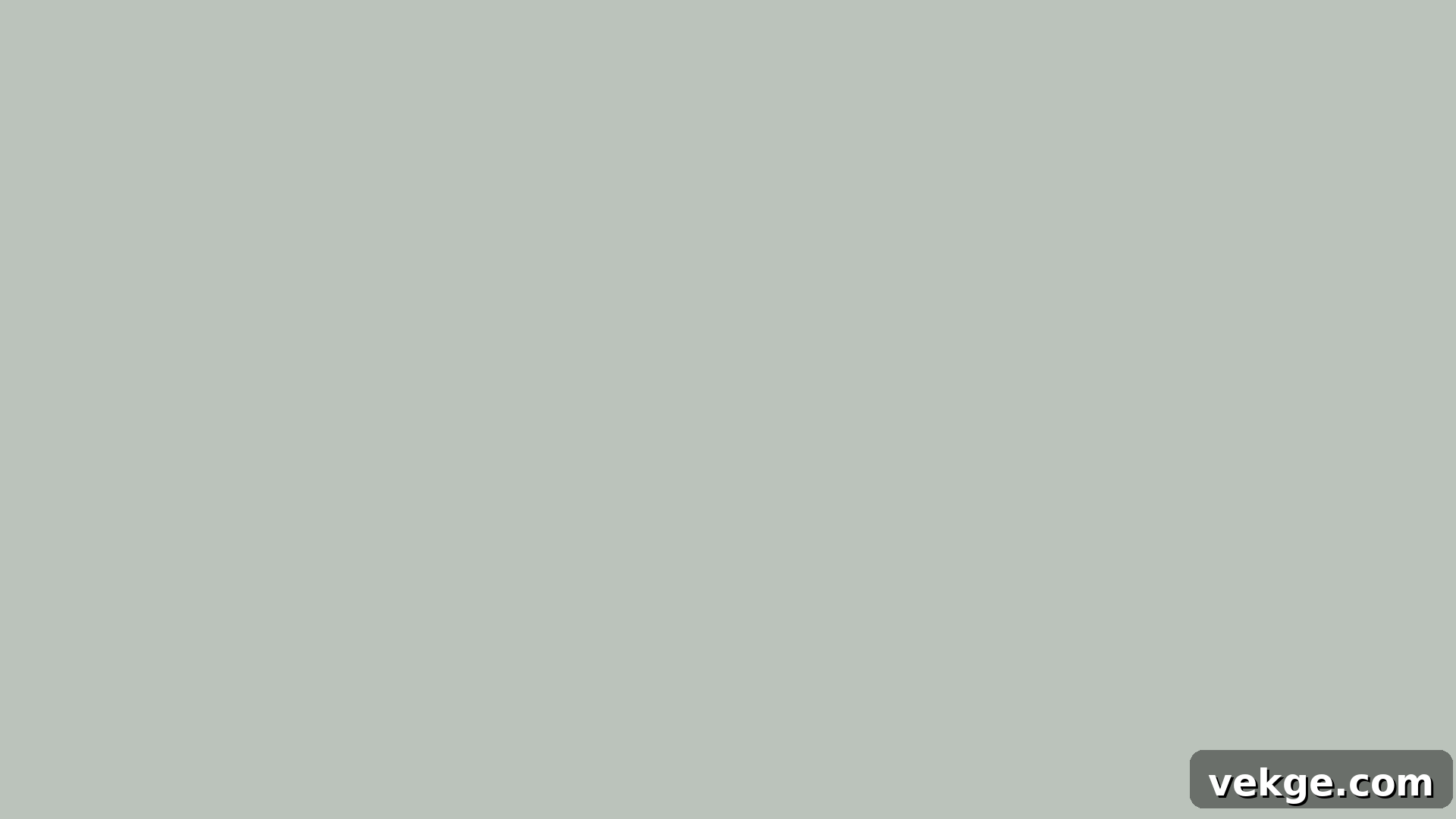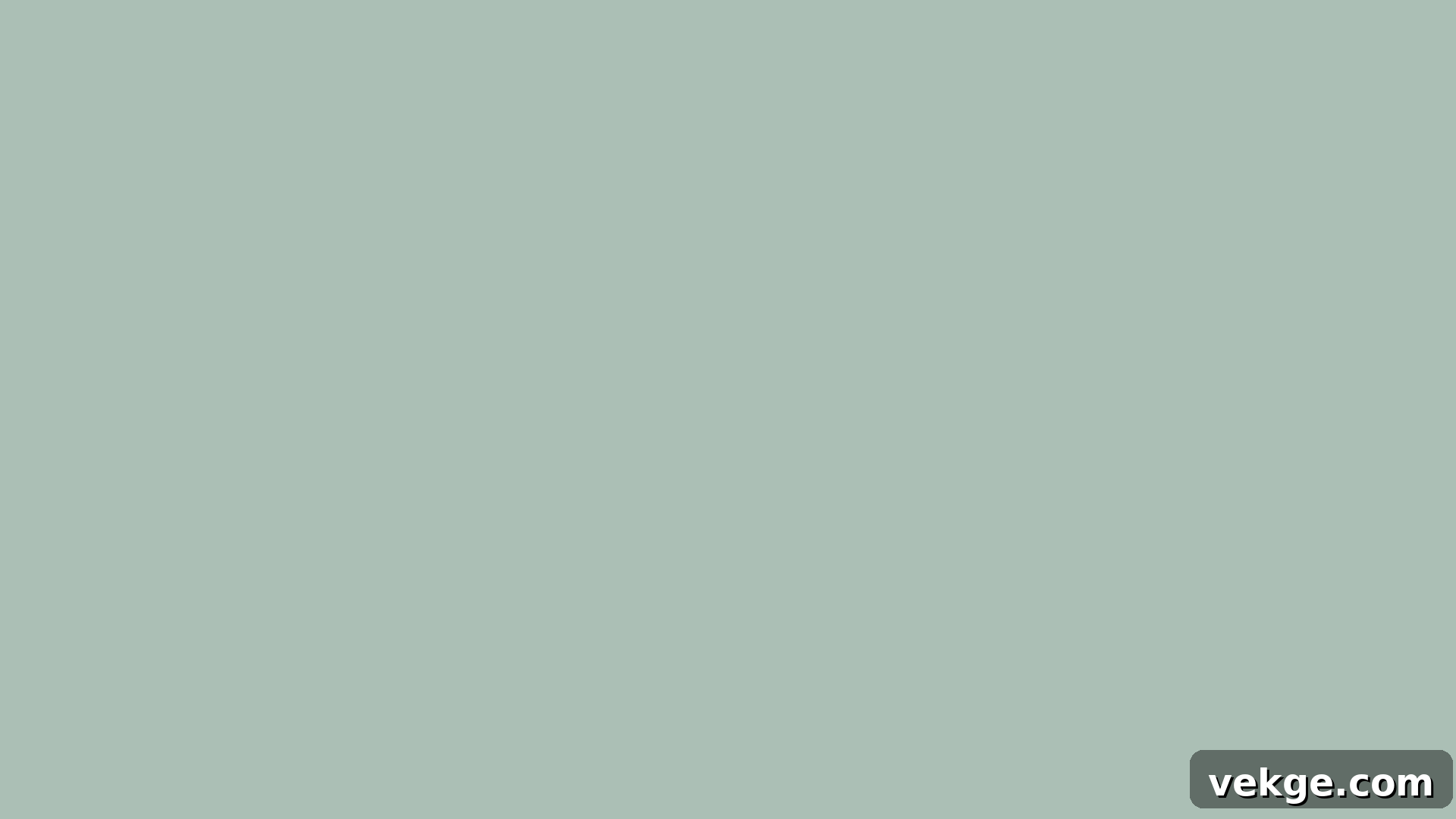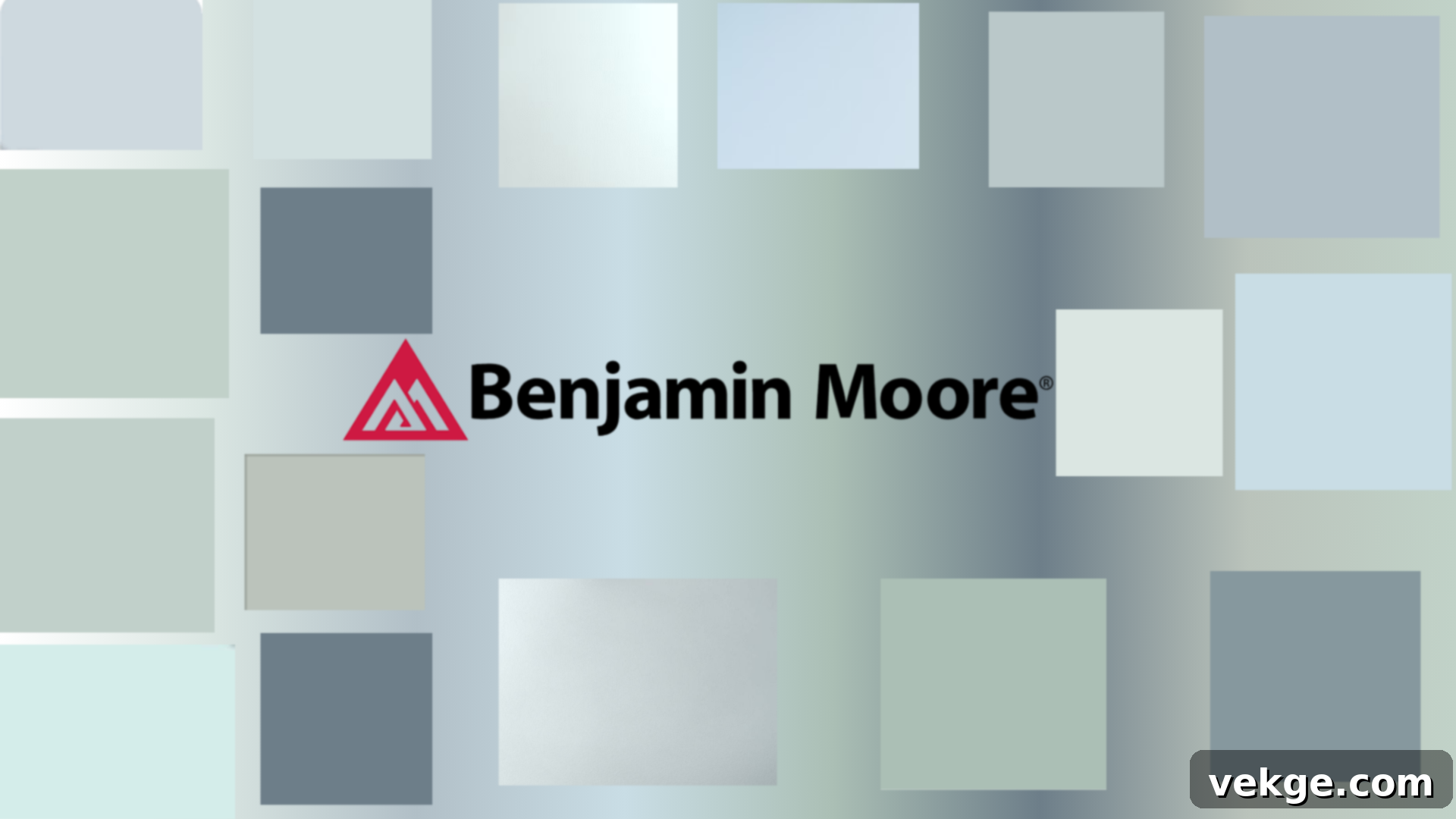Discover the Best Haint Blue Benjamin Moore Paint Colors for Your Porch Ceiling & Beyond
Have you ever paused under a porch ceiling painted in a soft, ethereal blue, feeling an instant wave of calm wash over you? This enchanting shade is likely haint blue, a color steeped in rich history, undeniable beauty, and surprising practical benefits. It’s more than just a paint color; it’s a legacy.
However, with Benjamin Moore’s extensive palette, selecting the perfect haint blue can feel like searching for a specific cloud in a vast sky. Each hue offers a unique nuance, making the choice both exciting and challenging.
This comprehensive guide delves into the world of haint blue, focusing on Benjamin Moore shades. We’ll explore the fascinating origins of this Southern tradition, highlight the most popular and versatile colors, explain how natural light can transform each shade, and even suggest creative ways to incorporate haint blue throughout your home.
Ready to transform your porch into an inviting, peaceful, and expansive outdoor sanctuary? Let’s embark on a journey to find your ideal haint blue shade.
What is Haint Blue? A Legacy of Color and Charm
At its core, haint blue is a distinctive range of light blue-green paint colors, traditionally applied to porch ceilings. These captivating shades can span from the delicate lightness of a clear sky to deeper, more pronounced aqua tones. Beyond its aesthetic appeal, this special paint color boasts a dual heritage, rooted in both ancient protective customs and clever architectural features designed to enhance Southern homes.
Today, homeowners far and wide choose haint blue not only for its inherent beauty and the serene atmosphere it creates but also for its compelling historical narrative, connecting their modern homes to a timeless tradition.
The Mysterious Origins of Haint Blue
The intriguing practice of painting porch ceilings a pale blue finds its deepest roots within the resilient Gullah Geechee communities. These communities, comprised of descendants of enslaved Central and West African people, flourished along the picturesque coastal regions of South Carolina and Georgia. Their unique culture and traditions, born from a blend of African and American influences, gave rise to many distinctive customs, including the use of haint blue.
In Gullah Geechee folklore, “haints” were believed to be restless spirits of the dead. To safeguard their homes and families, the blue paint was applied strategically to doors, window frames, shutters, and, most famously, porch ceilings. The belief was that this specific shade of blue would act as a deterrent to these unwelcome spirits.
Different theories explained its effectiveness: some believed the ethereal blue color would cunningly confuse spirits, leading them to mistake the painted ceiling for the open sky, causing them to pass harmlessly through. Others held that the water-like hue would frighten away haints, as folklore suggested these spirits harbored a deep fear of water. This rich spiritual foundation imbues haint blue with a sense of depth and mystery that resonates to this day.
Haint Blue: A Beloved Tradition in the American South
A stroll through historic cities like Charleston or Savannah quickly reveals the enduring popularity of haint blue, with countless homes proudly displaying its tranquil beauty on their porch ceilings. While its origins are deeply spiritual, the practice of using haint blue quickly spread across the wider South, gaining traction for a variety of additional, more practical reasons.
Beyond warding off spirits, many homeowners observed that the blue paint seemed to deter wasps and other insects from building nests on their porches, a welcome benefit in humid Southern climates. The soft blue shade is also known for its remarkable ability to reflect light, a quality that makes outdoor spaces feel significantly larger, more open, and undeniably brighter. This visual trick enhances the sense of spaciousness, preventing covered porches from feeling dim or confined.
Moreover, the color itself evokes a profound sense of calm, reminiscent of clear, boundless skies or the tranquil surface of water. This natural connection enhances the comfort and relaxation of sitting outdoors, creating an inviting atmosphere. Even those who no longer believe in haints enthusiastically embrace the beautiful, soothing blue tones, recognizing its intrinsic charm and the welcoming ambiance it creates for any home.
Top Haint Blue Paint Colors from Benjamin Moore: Your Ultimate Palette
Benjamin Moore is renowned for its exceptional quality and a vast spectrum of colors, making it a natural choice for those seeking the perfect haint blue. Below, we’ve curated a selection of Benjamin Moore’s finest haint blue shades, categorized to help you find the ideal match for your home’s aesthetic and the specific mood you wish to evoke.
Soft & Classic Tones: Timeless Tranquility
These gentle, nuanced blues embody the authentic, traditional haint blue aesthetic. They cast a serene feeling overhead, creating a calming canopy that complements a wide range of exterior color schemes. These beloved shades have graced porch ceilings for generations, offering enduring appeal and classic charm.
1. Palladian Blue (HC-144)

Palladian Blue (HC-144) stands as a perennial favorite and one of the most frequently requested haint blue colors by both paint professionals and discerning homeowners. This exquisite shade masterfully blends a soft blue with just enough delicate green undertones to create a complex and utterly captivating hue. It’s neither too blue nor too green, striking a perfect, harmonious balance.
Palladian Blue instills a restful and inviting mood, pairing beautifully with natural wood tones, warm browns, and classic white trim. Its soft, watery quality gives any porch a polished and refined look without being overtly bold or overwhelming. Many designers consistently recommend this color because of its remarkable versatility and its consistent ability to deliver stunning results, making it a truly fail-safe option for achieving that quintessential haint blue look.
2. Breath of Fresh Air (806)

Breath of Fresh Air (806) truly lives up to its evocative name, offering a paint color that feels instantly revitalizing. Its light, airy quality makes porches feel expansive and breezy, as if a gentle zephyr is always passing through. This soft, clean blue precisely mimics the appearance of a clear, cloudless sky, effortlessly bringing a touch of nature’s tranquility directly to your ceiling.
This particular shade excels on traditional porches, especially those adorned with crisp white columns or classic railings, where its clean simplicity shines. Breath of Fresh Air provides just the right amount of inviting color without detracting from other architectural elements or decorative features of your porch. It’s an excellent choice that offers more character and charm than plain white, while still maintaining a bright and open feel.
3. Woodlawn Blue (HC-147)

Woodlawn Blue (HC-147) masterfully strikes a perfect balance, featuring blue-gray tones that subtly shift and evolve with the changing light throughout the day. This adaptable color demonstrates remarkable flexibility, harmonizing beautifully with a diverse array of exterior paint colors and architectural styles. Its versatility makes it a highly desirable choice for various homes, from historic to contemporary.
The subtle gray undertones within Woodlawn Blue lend a sophisticated calmness to the blue, preventing it from appearing overly bright or childish. Instead, it offers a mature and refined aesthetic. This shade is particularly effective when paired with warm wood tones, rich browns, or even deep reds, creating a pleasing contrast that naturally draws the eye upward, highlighting the ceiling as a key architectural feature.
4. Tranquility (AF-490)

Tranquility (AF-490) is a dusty, soft blue that truly embodies its name, creating an immediate sense of peace and repose. This gentle, slightly grayed blue feels inherently quiet and soothing, making it an ideal choice for cultivating a calm and restorative porch retreat. It’s the color of a peaceful dusk, inviting relaxation.
Tranquility possesses sufficient depth to be distinctly noticeable, yet it remains subtle enough not to overpower its surroundings or demand undue attention. It performs exceptionally well on porches that receive an abundance of natural light, where the color can beautifully deepen and gain complexity as shadows play across its surface. This versatile shade pairs elegantly with cream, tan, and various gray exterior colors, enhancing their understated beauty.
5. Wythe Blue (HC-143)

Wythe Blue (HC-143) distinguishes itself by leaning more prominently toward green than blue, setting it apart from many other traditional haint blue options. As a proud member of Benjamin Moore’s esteemed historical collection, this color beautifully echoes America’s colonial past, carrying a sense of heritage and timelessness.
A subtle touch of gray in Wythe Blue expertly tempers its vibrancy, resulting in a sophisticated, muted appearance that feels both mature and understated. This unique shade is particularly complementary to homes featuring brown, cream, or classic brick-red exteriors, adding a thoughtful splash of color that feels perfectly at home on traditional Southern porches. It’s a choice that speaks of character and history.
Cool & Airy Vibes: Refreshing Breezes Overhead
These Benjamin Moore blues evoke sensations of lightness, freshness, and expansive open space. Infused with delicate hints of gray and clean undertones, they perform exceptionally well in brightly lit environments. These colors are designed to make your outdoor areas feel breezy and open, ideal for capturing gentle summer winds or cultivating year-round comfort and an invigorating atmosphere.
6. Iceberg (2122-50)

Iceberg (2122-50) is a clean, crisp shade that truly lives up to its name, offering a cool and refreshing presence that is especially welcome on warm summer days. The pale blue is expertly grounded by a subtle gray base, which prevents it from appearing overly sweet or childlike. Instead, it exudes a sophisticated coolness that is both inviting and understated.
Iceberg is an impeccable choice for beach homes or coastal cottages, where it effortlessly evokes that desirable seaside feeling without requiring a bold or intense color statement. This versatile color shifts subtly throughout the day: in bright sunlight, it can appear almost white, while in the softer light of evening, its true blue notes become more pronounced, adding dynamic interest to your porch ceiling.
7. Blue Hydrangea (2062-60)

Named after the universally beloved garden flower, Blue Hydrangea (2062-60) infuses porch ceilings with a cheerful yet distinctly traditional sensibility. Its brighter blue tone creates a more noticeable visual impact compared to some of the softer haint blue shades, making a gentle statement without being overwhelming.
While still light enough to maintain an airy and open feel, Blue Hydrangea possesses enough color saturation to truly make its presence known. This shade works wonderfully not only on ceilings but also on shutters, allowing for a beautifully coordinated exterior look. It pairs exceptionally well with classic white exteriors, creating a timeless coastal style that feels both fresh and inviting.
8. Whispering Spring (2136-70)

Whispering Spring (2136-70) is an extremely light blue that evokes the delicate, first hint of color in a pristine morning sky. So subtle it borders on white, this shade introduces just enough blue pigment to create a nuanced interest without making a bold or dominant statement. It’s the whisper of color rather than a shout.
Whispering Spring is ideally suited for very bright, sun-drenched porch areas where more intense colors might feel overwhelming or too vivid. Its barely-there quality makes it the perfect choice for homeowners who appreciate the rich tradition of haint blue but desire an exceptionally understated and delicate touch, blending seamlessly with almost any decor.
9. Harbor Haze (2136-60)

Harbor Haze (2136-60) is an airy blue that beautifully captures the serene appearance of distant water on a misty, tranquil morning. Its soft, atmospheric finish creates a gentle ceiling that feels remarkably open and expansive, extending the perceived boundaries of your porch. It’s like having a slice of the horizon right above you.
Harbor Haze is particularly effective in humid climates, where its water-like quality feels organically at home, blending with the natural surroundings. The color possesses enough presence to be distinctly noticed, yet it remains light enough to make spaces feel considerably larger and more breathable. This versatile shade pairs beautifully with gray, white, or tan house colors, creating a cohesive and harmonious exterior palette.
10. Lookout Point (1646)

Lookout Point (1646) features a deeper gray-blue hue that introduces a more dramatic and sophisticated element compared to typical haint blue shades. This moody and contemplative tone adds significant dimension and visual interest to covered porches, especially those that receive less direct sunlight, where it can create a cozy, den-like atmosphere.
Lookout Point exudes a refined and mature elegance while still maintaining a clear connection to the revered haint blue tradition. This color is an excellent choice for more modern homes that wish to subtly reference traditional styles without adopting an overtly old-fashioned aesthetic. It forms a striking and elegant partnership with crisp white trim and sophisticated gray exteriors, creating a truly impactful statement.
Deeper & More Dramatic Options: Making a Statement
For those who desire a haint blue that moves beyond traditional lightness, these Benjamin Moore options offer a more pronounced color impact. These deeper haint blue tones create stronger visual interest and a sense of grounding, while still honoring the historical tradition. They make a confident statement, all while preserving the cooling and expansive effect that makes haint blue so universally popular.
11. Smoke (2122-40)

Smoke (2122-40) pushes the haint blue concept into a bolder, more contemporary direction with its strong, commanding gray undertones. The smoky quality of this shade creates a sophisticated and modern interpretation of the classic blue ceiling color, offering a fresh take on a timeless tradition.
Smoke pairs exceptionally well with homes that feature dark shutters or trim, helping to forge a cohesive and visually striking exterior design. It is an excellent choice for homeowners who are looking for something distinctly different, yet still intrinsically linked to the haint blue heritage. The deeper tone also offers a practical advantage: it helps to better conceal dirt, dust, and cobwebs compared to much lighter blues, making it a low-maintenance option for porches that receive less frequent cleaning.
12. Water’s Edge (1635)

Water’s Edge (1635) is a medium-toned blue that introduces significantly more color strength than typical haint blue selections. This richer, deeper shade performs particularly well in expansive porch areas where lighter colors might feel diminished or visually washed out, providing the necessary depth to hold its own.
Water’s Edge effectively defines the ceiling plane, helping to make outdoor rooms feel more deliberately finished and integrated into the home’s architecture. The color exhibits a beautiful dynamism, subtly shifting throughout the day to reveal different blue tones as the natural light evolves. It pairs nicely with stone exteriors or classic white clapboard, creating a look that is both traditional and assertively bold.
13. Normandy (2129-40)

Normandy (2129-40) is a cooler, muted blue that takes on a remarkably beautiful quality under bright sunlight, a condition where many colors can unfortunately appear washed out. This balanced tone skillfully treads the line between traditional charm and modern sophistication, making it suitable for a wide array of home styles, from historic estates to contemporary builds.
Normandy contains enough gray to temper its blue, ensuring it never feels overly bright or immature. The color delivers a sophisticated ceiling option that subtly but clearly connects to the time-honored haint blue custom. It pairs exceptionally well with cream, various shades of gray, or serene sage green exterior colors, creating a harmonious and elegant facade.
14. Blue Heather (1620)

Blue Heather (1620) is a truly unique shade that gracefully balances between blue and lavender, introducing an unexpected and delightful twist on the traditional haint blue concept. While its soft color palette remains perfectly appropriate for classic and traditional homes, it ventures into a slightly different, more intriguing aesthetic territory.
Blue Heather is notably transformative, changing dramatically with the ambient light; it can sometimes appear more purple and at other times reveal more gray-blue undertones. This captivating shifting quality adds dynamic visual interest to your porch throughout the day, creating an ever-evolving canvas overhead. It offers a gentle, unusual, yet profoundly charming ceiling color that sparks conversation without being too audacious.
Subtle & Muted Tints: Understated Elegance
These exquisitely gentle colors offer the quintessential haint blue aesthetic with maximum subtlety and refinement. Their quiet, unassuming presence is ideally suited for homes where a connection to tradition is desired without the need for bold color statements. These nuanced shades introduce visual interest while remaining exceptionally close to neutral, making them effortlessly easy to integrate into any existing color scheme.
15. Ocean Air (2123-50)

Ocean Air (2123-50) is a clean, quiet blue that conjures a profoundly peaceful ceiling, reminiscent of a crisp, clear day at the beach. This gentle color holds just enough blue pigment to be distinctly noticed, yet it manages to do so without demanding attention or overwhelming the space. It’s the essence of tranquility.
Ocean Air pairs beautifully with stark white trim, creating a fresh, invigorating, and classic look that never goes out of style. The color imparts a wonderful sense of openness to porches, effectively making even compact spaces feel more expansive and genuinely inviting. Many designers frequently recommend this shade for its remarkable ability to harmonize gracefully with almost any exterior color scheme, showcasing its incredible versatility.
16. Beacon Gray (2128-60)

Beacon Gray (2128-60) is a soft blue-gray that offers a less common, yet equally compelling, interpretation of the haint blue tradition. Its inherent gray base lends it a more modern and sophisticated feel, while still retaining a deep connection to its historical roots, bridging past and present seamlessly.
Beacon Gray creates a sophisticated ceiling option that works exceptionally well for contemporary homes that wish to subtly reference tradition without feeling dated. The muted quality of this shade makes it an ideal choice for homeowners who find more typical, brighter blues too intense or overtly childish. It pairs especially well with darker exterior colors, creating a subtle yet impactful contrast that adds remarkable depth and character to your home’s facade.
17. Icy Moon Drops (2056-70)

Icy Moon Drops (2056-70) is a light, crisp shade with a clean, delicate blue tint that infuses porch ceilings with an undeniable freshness. This color masterfully balances a modern sensibility with a profound connection to tradition, creating a harmonious and timeless appeal that feels both current and classic.
Icy Moon Drops possesses a bright, almost luminous quality that allows it to stand out beautifully against white trim without ever appearing too bold or stark. This color looks absolutely gorgeous on homes painted in bright white or soft gray, enhancing their overall curb appeal. What’s more, this enchanting shade illuminates your ceiling long after dusk, creating a gentle, ethereal glow as the evening settles in, extending the magic of your outdoor space.
Why Haint Blue Endures: Timeless Popularity and Proven Benefits
Haint blue continues to capture the hearts of homeowners across diverse styles and regions because its appeal operates on multiple, compelling levels. The soft, captivating blue introduces a profound sense of calm to outdoor spaces while simultaneously enhancing their aesthetic beauty and perceived spaciousness. This remarkable color has steadfastly maintained its prominence through countless shifts in home decor trends, largely due to its exceptional adaptability and its ability to seamlessly integrate with virtually any design scheme, from rustic to ultra-modern.
The Psychological Benefits of Haint Blue
The strategic application of the right paint color possesses the remarkable power to profoundly influence our mood and perception within a space. Haint blue masterfully achieves this on porches by forging an immediate and comforting connection between our domestic environments and the expansive, soothing natural world just beyond our walls.
- It consistently creates an immediate sense of peace and tranquility within outdoor sitting areas, transforming them into serene retreats.
- The gentle blue-green shades inherently remind observers of the calming presence of water and the vastness of the sky, tapping into primal feelings of relaxation.
- It effortlessly brings a desirable coastal or seaside feeling, even to homes situated far inland from actual beaches, extending the allure of a coastal escape.
- When applied to ceilings, haint blue actively helps spaces look significantly bigger and more open, an optical illusion that enhances perceived spaciousness.
- The color naturally pulls the eye upward, mirroring the experience of gazing into the open sky, which contributes to a feeling of expansiveness.
- It consistently provides a pervasive feeling of openness, airiness, and abundant light, brightening even shaded areas.
- Haint blue makes porches feel considerably more welcoming and less enclosed, fostering a greater sense of connection with the outdoors.
Functional Advantages: Beyond Just Pretty Paint
A truly effective porch ceiling color must offer more than mere aesthetic appeal. Haint blue delivers tangible, practical benefits that have cemented its popularity across generations of homeowners, proving its enduring value.
- Its lighter hues are highly effective at reflecting sunshine, maximizing natural light.
- This reflective quality helps to significantly brighten porches that might otherwise feel dim, dark, or perpetually shaded, making them more inviting.
- The light-bouncing characteristic also makes the space more useful and enjoyable throughout the day, extending its functionality.
- Many believe, based on anecdotal evidence and historical observation, that these specific shades of blue deter wasps and spiders from building their nests on ceilings.
- It is thought that the blue color may confuse certain insects, causing them to mistake the painted surface for an open sky, thereby encouraging them to avoid nesting.
- Historically, early haint blue paint recipes often incorporated lime, which indeed possessed natural insecticidal properties, actively helping to control insect populations.
- Haint blue performs remarkably well in both brightly sunny and deeply shaded porch areas, adapting beautifully to various lighting conditions without losing its charm.
Beyond the Ceiling: Where Else Can You Use Haint Blue?
While haint blue is most famously associated with porch ceilings, the versatile charm of this color extends beautifully to numerous other areas throughout your home. Its soft blue-green tones are wonderfully adaptable and can be thoughtfully integrated into both indoor and outdoor spaces, bringing a cohesive sense of tranquility. Moving beyond just the porch ceiling opens up exciting new possibilities to fully embrace this historical color and enjoy its universally peaceful and expansive effects.
Porch Floors & Trim Accents: Cohesive Outdoor Design
Extending the application of haint blue beyond the ceiling can help create a beautifully complete and harmonious look for your entire outdoor living space. When used on porch floors, the gentle blue tones introduce a subtle yet distinctive charm, lending a cohesive and thoughtfully designed feeling to the area. This unexpected application provides a unique twist on tradition.
Haint blue also serves as a perfect accent color for trim work, decorative columns, and railings, where it stands out elegantly against crisp white or creamy backgrounds. When paired with white walls, blue trim establishes a clean, classic aesthetic that feels both fresh and deeply rooted in historical design principles. Furthermore, this color choice offers a practical advantage: it is far more forgiving than pure white, effectively concealing dirt, dust, and scuff marks, making it ideal for high-traffic outdoor areas.
Window Shutters & Doors: Enhanced Curb Appeal
The application of haint blue on window shutters and exterior doors directly harks back to the color’s most ancient historical roots. In the original Gullah Geechee homes, these crucial entry and exit points were often painted blue, specifically to ward off unwanted spirits and provide protection. Today, this tradition offers a powerful way to significantly enhance your home’s curb appeal, adding character and warmth.
The soft blue creates an exceptionally welcoming entrance that stands out with understated elegance, without ever being too bold or ostentatious. For homes with neutral siding—such as beige, gray, or tan—haint blue doors and shutters provide just the right amount of inviting color interest, breaking up monotony and adding personality. This shade is also a popular choice for garden gates, creating a pretty, picturesque transition point within your outdoor landscaping, inviting guests further into your sanctuary.
Bathroom & Bedroom Ceilings: Indoor Serenity
Indoors, haint blue finds a particularly natural home in bathrooms, where its water-inspired color feels inherently fitting, especially when applied to ceilings. In smaller bathrooms, this shade can work wonders, making the space feel significantly larger, more open, and refreshingly airy, mimicking the vastness of the sky.
In bedrooms, a haint blue ceiling creates an incredibly restful and tranquil sleeping environment, evoking the serene sensation of falling asleep under an expansive, open sky. This color is especially effective in rooms that require a gentle touch of color and visual interest without the commitment of painting all the walls. Indoor ceilings adorned in these soft blues can help rooms feel perceptibly taller and more spacious, adding an unexpected layer of calm and sophistication to your interior design.
Choosing the Right Sheen & Finish: Details That Matter
Many guides overlook this critical step, but the sheen you select for your paint can dramatically alter how your chosen haint blue color appears and how effectively it endures over time. Paying close attention to these important details ensures your haint blue looks its absolute best, maximizing its beauty and resilience against the elements.
Best Sheen for Porch Ceilings
The paint finish you choose for your haint blue ceiling directly impacts both its visual appearance and its long-term durability. Making the right choice here is essential for a lasting, beautiful result.
- Flat or Matte Finishes: These options create the most traditional and authentic appearance, lending your ceiling a soft, velvety look that closely mimics historical haint blue applications. This low-shine option is excellent for concealing minor imperfections in older ceilings and contributes to a more genuinely historical aesthetic.
- Satin Finish: For porches that demand greater durability or are frequently cleaned, a satin finish offers enhanced dirt resistance and is easier to wipe clean, while still maintaining a fairly soft, subtle sheen that isn’t overly reflective.
- Avoid Glossy Finishes: It is generally advisable to steer clear of glossy finishes for porch ceilings. Their high reflectivity can create too much distracting shine and often looks out of place in the context of traditional porch architecture.
Essential Primer Tips for Haint Blue
A solid foundation is absolutely crucial for ensuring your haint blue color displays its true, vibrant beauty and achieves optimal adhesion. The right primer not only saves valuable time but also contributes significantly to a superior, more professional-looking result.
- Always ask your paint store to tint your primer a light blue or gray shade. This simple step is a game-changer.
- A tinted primer helps the final haint blue color appear true and rich with fewer coats of paint, preventing the need for excessive layering.
- This method saves both time and money by significantly reducing the number of paint layers required to achieve full coverage and depth of color.
- Using a high-quality primer ensures that your chosen paint adheres much better to the ceiling surface, preventing peeling or chipping down the line.
- For older porches or ceilings with existing stains, utilize primers specifically formulated to seal and block stains. This prevents water marks, nicotine stains, or other discolorations from bleeding through and ruining your beautiful new haint blue finish.
Interior vs. Exterior Formulas: The Right Paint for the Job
When painting porch ceilings, even those that are fully covered and seem protected, it is imperative to always opt for an exterior paint formula. This distinction is critical for performance and longevity.
- Exterior Paints: These paints are specifically engineered to withstand the rigors of outdoor conditions. They are formulated to expand and contract with fluctuations in temperature and humidity, which prevents cracking, peeling, and blistering. Many exterior paints also incorporate powerful mildew-fighting ingredients, an invaluable feature in humid climates where moisture can easily accumulate on ceilings, preventing unsightly mold and mildew growth.
- Interior Paints: While interior paint is perfectly suitable for indoor areas like bathrooms, it’s still wise to select a version that is specifically formulated to resist moisture and mold in such damp environments. However, it lacks the flexibility and protective qualities needed for outdoor exposure. That extra layer of protection, whether for interior moisture resistance or exterior weather resilience, helps your chosen color remain fresh, clean, and beautiful for years to come.
Brand Comparisons & Swatch Tips: Finding Your Perfect Match
The journey to finding your absolute perfect haint blue might involve exploring options across several paint brands. Each company offers its unique interpretation of these traditional colors, with subtle variations in undertones, intensity, and formulation. Understanding how to effectively compare options and properly test them can save you considerable time, effort, and prevent costly mistakes.
Sherwin-Williams & Behr Matches to Benjamin Moore Haint Blue
If you adore Benjamin Moore’s haint blue colors but prefer to use another reputable paint brand, here are some excellent close matches across popular paint lines like Sherwin-Williams and Behr. Keep in mind that “matching” is an art, not a science, and slight variations will always exist.
| Benjamin Moore Color | Sherwin-Williams Match | Behr Match |
|---|---|---|
| Palladian Blue (HC-144) | Rainwashed (SW 6211) | Watery (HDC-CT-26A) |
| Woodlawn Blue (HC-147) | Tradewind (SW 6218) | Ocean Boulevard (550E-3) |
| Wythe Blue (HC-143) | Quietude (SW 6212) | Teal Facade (S450-3) |
| Ocean Air (2123-50) | Sea Salt (SW 6204) | Moonglass (S420-2) |
| Iceberg (2122-50) | Atmospheric (SW 6505) | Air Blue (S460-1) |
| Breath of Fresh Air (806) | Windy Blue (SW 6240) | Tender Blue (550C-3) |
| Icy Moon Drops (2056-70) | Tidewater (SW 6477) | Aqua Whisper (530A-2) |
For instance, the closest match to Benjamin Moore’s highly popular Palladian Blue is generally considered to be Sherwin-Williams Rainwashed, though Rainwashed typically exhibits slightly more pronounced green undertones. From Behr, homeowners often find “Watery” to be an excellent alternative, offering a similar soft blue-green with just a hint of gray, making it a superb choice for a traditional porch ceiling.
Where to Get Samples: The Importance of Testing
Thorough testing before committing to a full paint job is absolutely essential, particularly for outdoor spaces where lighting conditions can dramatically shift throughout the day and with changing weather. Don’t skip this crucial step!
- Samplize: Offers convenient peel-and-stick swatches. These are mess-free and allow you to easily move samples around, but they can be pricier and may not always offer every single color option.
- Benjamin Moore Stores: Provides exact, small-pot color samples directly from the brand. You’ll need to paint these onto a surface and allow them to dry to see the true color, and expert advice is often readily available.
- Hardware Stores: Often carry more affordable sample pots from various brands. However, be aware that these might not always be perfectly precise matches, and they are usually only available in a flat finish, which may not represent your final desired sheen.
- DIY Sample Boards: This method involves painting large swatches (e.g., on foam board or scrap wood) yourself. It is often the most accurate way to visualize the color in different locations and lighting, as you can move the boards. However, it requires a bit more time and supplies.
Regardless of where you get your samples, paint at least a 2-ft-square area (or use large sample boards) and observe it carefully in different lighting conditions—morning sun, afternoon shade, overcast days, and even evening light—to gain a truly accurate feel for how the color will appear on your porch ceiling.
Summing Up: Embrace the Haint Blue Tradition
Choosing the ideal haint blue Benjamin Moore shade is more than just selecting a color; it’s about transforming a regular porch into your favorite place to relax, a space imbued with history, tranquility, and charm. Throughout this guide, you’ve explored the rich origins of this Southern tradition, discovered top Benjamin Moore colors, understood how natural light influences their appearance, and even considered new possibilities for where this versatile hue can enhance your home beyond the ceiling.
Now, take a moment to envision your own porch, consider its unique lighting conditions, and reflect on your personal style. Use the valuable insights you’ve gained to confidently test a few samples, letting your intuition guide you toward the shade that feels perfectly right. A soft blue ceiling is not merely a pretty accent; it’s a living part of a captivating story, offering peace and beauty with every glance.
Ready for more inspiring ideas to elevate your home? Browse our latest posts for fresh tips on paint, design, and creating spaces you’ll love.
